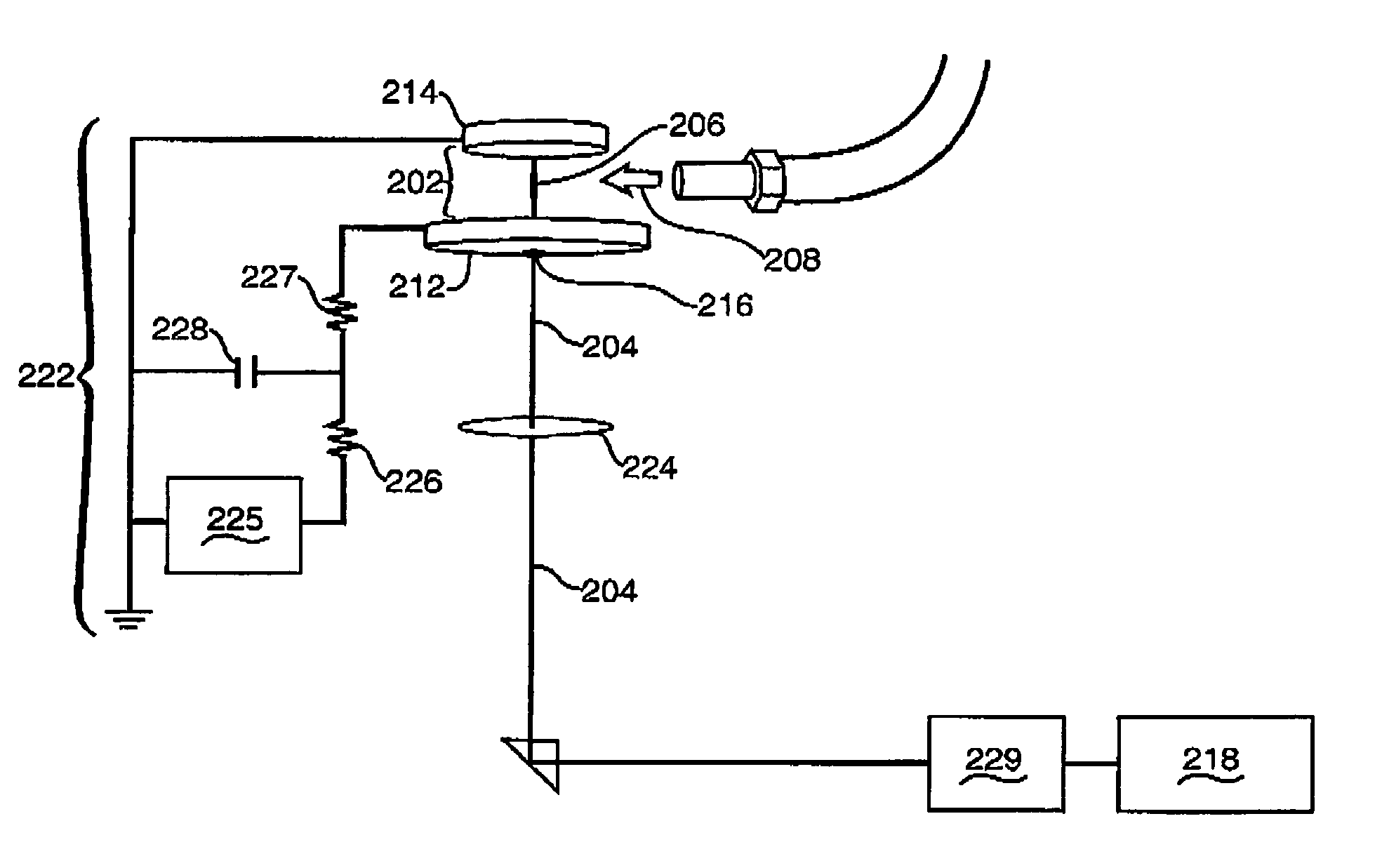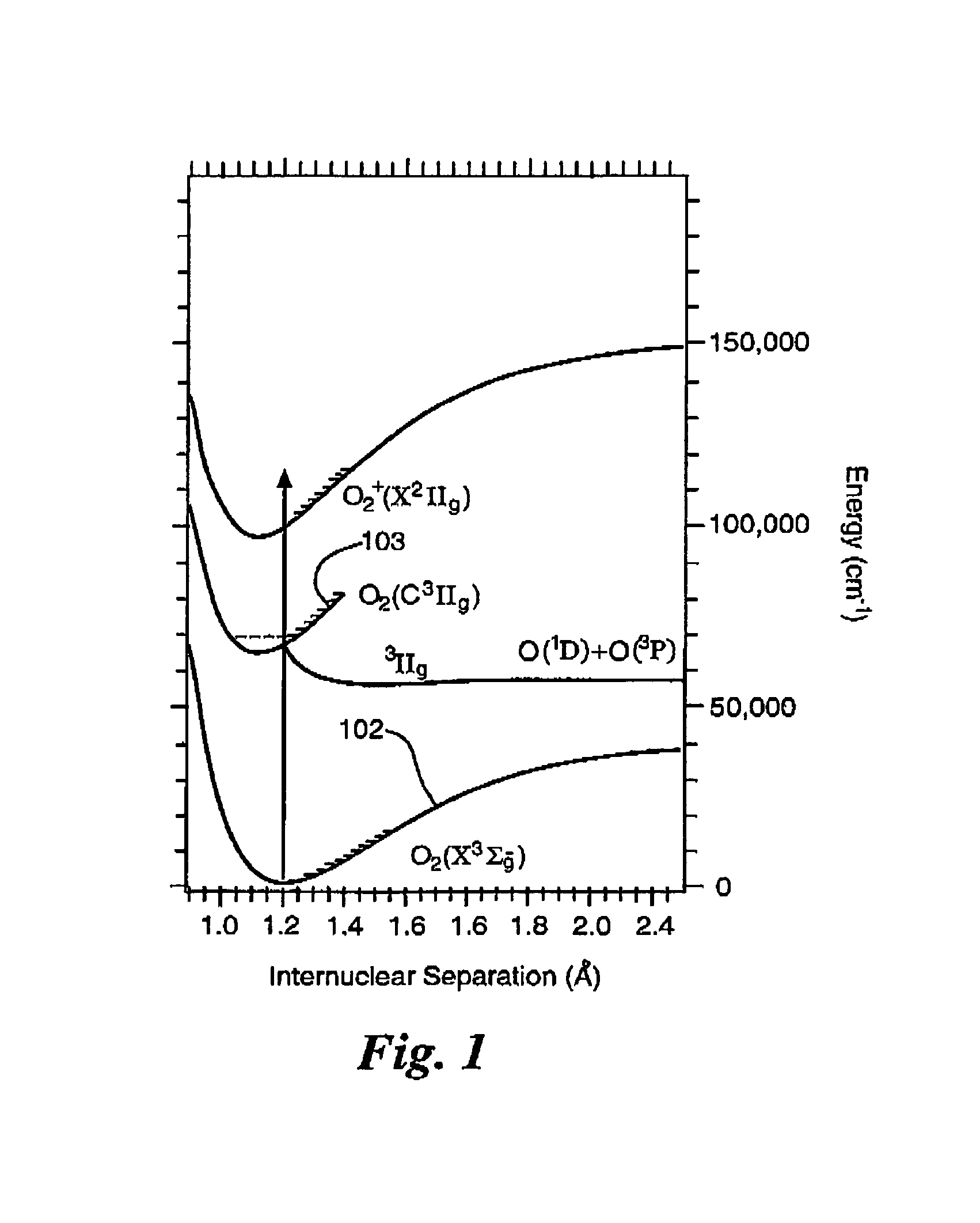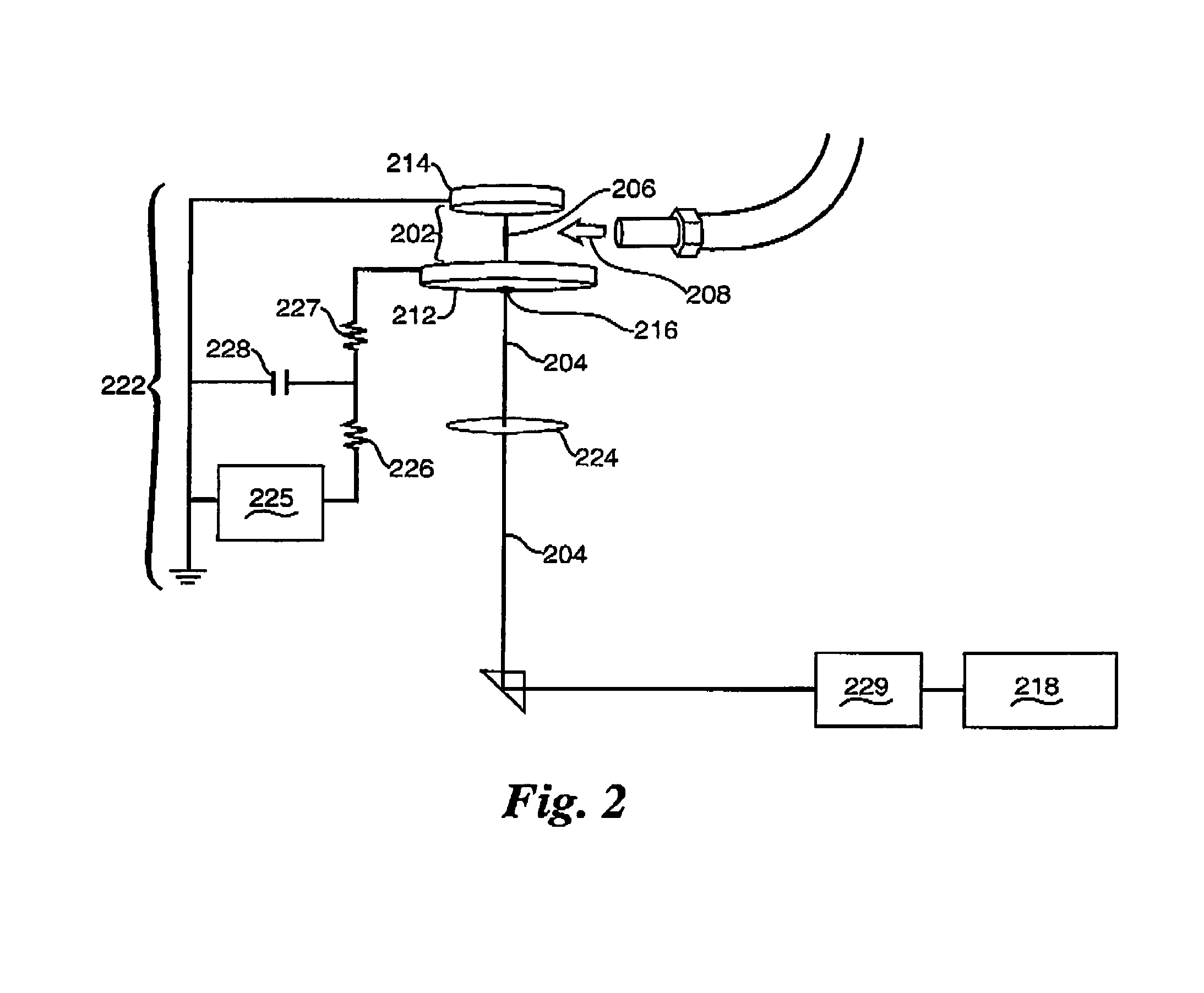Low energy laser-induced ignition of an air-fuel mixture
a low-energy laser and air-fuel technology, applied in the field of photoionization, can solve problems such as engine failur
- Summary
- Abstract
- Description
- Claims
- Application Information
AI Technical Summary
Benefits of technology
Problems solved by technology
Method used
Image
Examples
Embodiment Construction
[0025]The resonant laser-induced ignition concept of the present invention uses a relatively low energy ultraviolet laser pulse to efficiently induce volume ionization in atmospheric air using a laser tuned to the proper wavelength to achieve resonant-enhanced multiphoton ionization (REMPI). The induced breakdown of an air gap with a novel ultraviolet laser triggering scheme according to the teachings of the present invention provides both spatial and temporal precision to a resulting electrical arc.
[0026]The teachings of the present invention are also described in Stephen F. Adams, Jared A. Miles and Adam C. Laber, Resonant Laser Induced Breakdown for Fuel Air Ignition, AIAA 2010-646, 48th AIAA Aerospace Sciences Meeting, 4-7 Jan. 2010, Orlando, Fla., which is incorporated by reference into this description.
[0027]Key to the example embodiment of the laser excitation approach of the present invention illustrated in this detailed description is the use of a focused pulsed laser near ...
PUM
 Login to View More
Login to View More Abstract
Description
Claims
Application Information
 Login to View More
Login to View More - R&D
- Intellectual Property
- Life Sciences
- Materials
- Tech Scout
- Unparalleled Data Quality
- Higher Quality Content
- 60% Fewer Hallucinations
Browse by: Latest US Patents, China's latest patents, Technical Efficacy Thesaurus, Application Domain, Technology Topic, Popular Technical Reports.
© 2025 PatSnap. All rights reserved.Legal|Privacy policy|Modern Slavery Act Transparency Statement|Sitemap|About US| Contact US: help@patsnap.com



